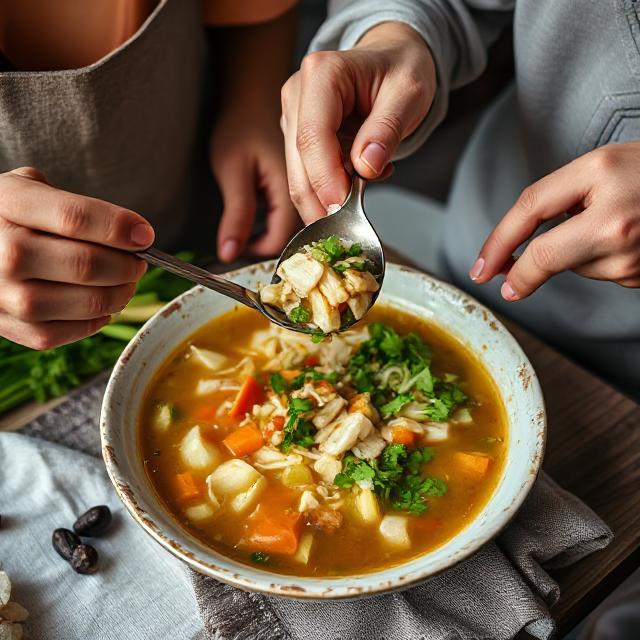
Table of Contents
Pairing Foods to Boost Nutrient Uptake
In the world of nutrition, what you eat is only half the equation—how your body absorbs it is the other. Many people focus on consuming more vitamins, minerals, and healthy foods, yet overlook a key truth: Nutrients don’t act alone. They absorb best in synergistic company.
Food pairings for nutrient uptake have been used for centuries—long before the word “bioavailability” entered the lexicon. From turmeric with black pepper in Ayurvedic medicine to beans and rice in Latin cuisine, traditional wisdom has often aligned with modern biochemistry. Today, we decode these pairings scientifically, revealing how combining specific nutrients enhances absorption, metabolism, and brain function.
🔍 Why Nutrient Uptake Matters
You could eat a kale salad, a salmon fillet, or a B-complex supplement—but if your body can’t absorb the nutrients inside, you’re not truly nourished.
Nutrient uptake is the cellular doorway between diet and function. It’s influenced by:
- Digestive environment (e.g., stomach pH)
- Enzyme presence and competition
- Nutrient form (heme vs non-heme iron)
- Synergistic or antagonistic nutrients consumed simultaneously
In short, what you pair together in a meal can either amplify your nutrient absorption or quietly block it.
🧠 Food Pairing Principle #1: Fat-Soluble Vitamins Need Fat
Vitamins A, D, E, and K are fat-soluble—meaning they dissolve in dietary fat. Without sufficient fat in a meal, they often pass through unabsorbed.
Best Pairings:
- Carrots + olive oil: Beta-carotene converts to Vitamin A in a fat-rich context.
- Spinach + eggs or avocado: Vitamin K absorption increases dramatically.
- Salmon + walnuts or chia seeds: Omega-3s assist with Vitamin D uptake.
Clinical Insight: A 2004 study in the American Journal of Clinical Nutrition showed that adding fat to salads increased carotenoid absorption by 5–10x.
For brain health, this pairing is foundational—especially for memory and neuroprotection, both influenced by Vitamin E and D levels.
🩸 Principle #2: Iron Absorbs Better with Vitamin C
Iron comes in two dietary forms:
- Heme iron (from meat): well absorbed
- Non-heme iron (from plants): poorly absorbed on its own
But Vitamin C acts as a chelating agent, converting iron to a more absorbable form in the gut.
Smart Pairings:
- Lentils + bell peppers
- Tofu + lemon juice
- Spinach + orange slices
Pro Tip: Avoid pairing iron-rich meals with calcium supplements or coffee—both inhibit absorption.
This pairing matters for energy, oxygen delivery, and cognitive endurance. Subtle iron deficiency can manifest as fatigue and mental fog.
🧬 Principle #3: Zinc and Phytates—The Mineral Lock & Key
Zinc is essential for immune and brain health, but plant foods often contain phytates—natural compounds that inhibit zinc and iron absorption.
Strategic Pairings:
- Soak or sprout beans and grains to reduce phytate content.
- Pair legumes with animal protein to boost zinc uptake.
- Eat shellfish like oysters alongside lemon or acidic sauces.
Fun Fact: Zinc plays a role in neurogenesis and synaptic plasticity—crucial for long-term learning.
Syntopic learners can especially benefit from maintaining optimal zinc levels for focused memory formation.
🍄 Principle #4: Polyphenols + Gut Health Synergy
Polyphenols (plant compounds in berries, cocoa, tea) have antioxidant, anti-inflammatory, and nootropic properties—but they’re poorly absorbed without microbial support.
Gut-Boosting Combos:
- Berries + yogurt: Probiotics enhance polyphenol breakdown.
- Green tea + fermented foods
- Dark chocolate + kefir
Research Note: Certain Lactobacillus strains boost the bioavailability of flavonoids and phenolic acids—key for mood regulation and brain resilience.
When paired correctly, these foods support the gut-brain axis, reducing inflammation that can impair cognition.
🧂 Principle #5: Sodium & Glucose—Dual Entry
In your gut lining, glucose and sodium use shared transporters. This means when consumed together, sodium actually facilitates glucose uptake into cells—boosting energy availability.
Ideal for:
- Study snacks with a pinch of sea salt (e.g., apple slices with nut butter and a salt sprinkle)
- Electrolyte-enhanced hydration during long mental work
This mechanism can be leveraged during long study sessions or fasted states when you need a sharp cognitive boost without a heavy meal.
🧠 Principle #6: Choline + DHA = Brain-Building Combo
Choline supports acetylcholine production—critical for memory and focus. DHA (an omega-3 fatty acid) supports neural membrane fluidity.
Together, they form the biochemical foundation for cognition.
Best Sources:
- Eggs (choline) + salmon or sardines (DHA)
- Liver pâté + anchovies or mackerel
This combo enhances working memory, attention span, and synaptic integrity, especially under cognitive load.
🧪 Lesser-Known Synergies
| Nutrient A | Nutrient B | Example Food Pair |
|---|---|---|
| Magnesium | B6 | Banana + almonds |
| Selenium | Vitamin E | Brazil nuts + sunflower seeds |
| Calcium | Inulin | Yogurt + Jerusalem artichoke |
| Curcumin | Piperine | Turmeric + black pepper |
| Lycopene | Fat | Tomatoes + olive oil |
These micronutrient combos optimize mitochondrial function, enzyme activation, and hormonal balance, all of which influence learning and mental endurance.
🧭 Practical Meal Building Guide
When designing your meals, ask:
- Is there a healthy fat present?
→ Helps absorb A, D, E, K, and carotenoids. - Does it include acidity or Vitamin C?
→ Enhances mineral absorption, especially iron. - Are there fermentables or probiotics?
→ Improves bioavailability of plant compounds. - Is there protein for carrier molecules?
→ Supports enzyme production and amino acid transport. - Are anti-nutrients reduced (e.g., by soaking/sprouting)?
→ Increases mineral availability.
Building this awareness turns every meal into a neuro-supportive protocol, not just fuel.
🧘♂️ Final Thought: Synergy Over Supplementation
In the pursuit of health and high performance, it’s tempting to look for quick fixes—isolated supplements, hyper-focused diets, or “superfoods.” But the true power lies in synergy—the way nutrients work together, guided by intelligence and tradition.
Food pairings for nutrient uptake are the original biohacks. They respect physiology, honor nature, and yield sustainable results.
